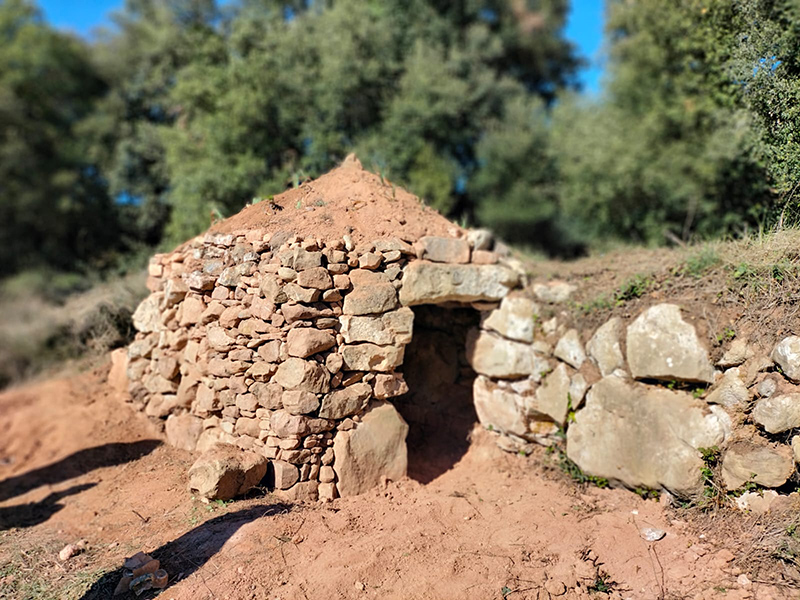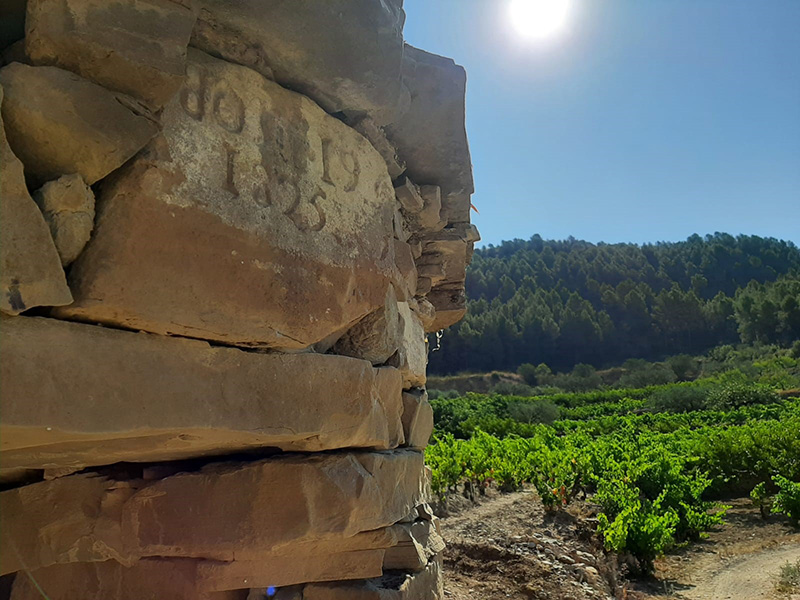One of the peculiarities that we can find in the DO Pla de Bages are the tubs and dry stone huts. These remember that this territory was the one with the largest extension of vineyards in all of Catalonia some 200 years ago, with up to 28,000 hectares.
Between 1860 and 1890 it was the gold rush of the Bages vineyard. The phylloxera plague had already ravaged the French vineyards, and as the demand for wines increased, prices and vine cultivation soared to take advantage of the moment. All this made the vines climb up the mountains until they reached these 28,000 hectares of vines in El Bages, creating a new landscape of dry stone beams and vine huts.
The distance from the farms forced the farmers to make these constructions between the vineyards called tinas, where they made the wine to avoid having to transport the grapes to the farm, since it was more practical to transport 65kg of wine than 100kg of grapes. The grapes entered at the top, were crushed with the feet on the honeycomb and fermented in the tank, and at the bottom exiting through the box, they were loaded for sale. In many cases, the wine was even sold in the same vat, avoiding having to transport it to the farm itself.
And on the other hand the huts, which were used to store agricultural tools or protect from inclement weather.
The phylloxera arrived first, but this was not the reason for abandoning the vineyard, since once the solution to American foot was discovered, up to 22,000 hectares were replanted. It was with the arrival of textiles that people left the vineyard to opt for a guaranteed salary at the end of each month, a fixed schedule and a job that was not so sacrificial. Also as a result of mechanization in the field, less manual cultivation was encouraged. From 22,000 hectares to the current 500.



